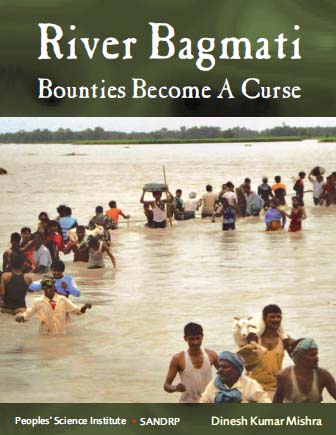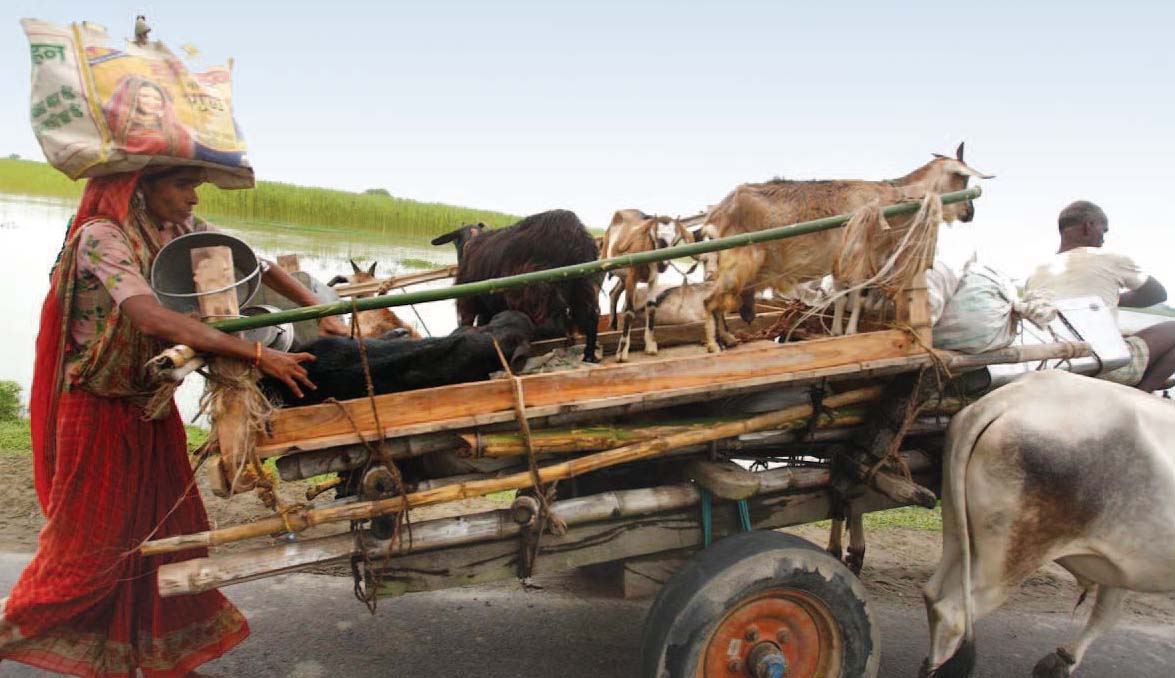
In this book, Dr. Dinesh Kumar Mishra has tried to put all the available information about the river Bagmati in one place. He has explained not only about floods but also about politics of embankments and its relevance. He reviews events from ancient time to the present based on historical review and first-hand knowledge of the ground realities and social conditions by visiting most villages in the basin and engaging with the local people. He has also suggested some alternatives about how to manage the river so that people of the area can be saved from deluge.
Nature has endowed north Bihar with mountains quite miserly. They are limited to a small cluster in the north-west. As if to make up for that scarcity, the state’s establishment has created string of hillocks along the banks of the rivers flowing here, which are commonly called embankments. Today, this string of hillocks taken together is approximately 3000 km long and its presence is supposed to make the rivers’ flow in the channel created by the embankments.
The river waters, however, create their own channels and flow in the direction they find expedient. This creates a constant tug-of-war between the course that the rivers naturally opt for and the embankments that create the obstruction. The establishment deems the rivers to be in the adversary camp. Why does the establishment view the rivers as enemies? And what about the people who reside on their banks. In whose name all this is being done. The eternal struggle between the gods and the demons is found in our scriptures. Let the readers decide who the demons are, as the rivers have always been deified in the folklore, the author says.

Image courtesy: Dinesh Kumar Mishra
One such river in north Bihar is the Bagmati. Starting it journey from the Shivalik range in Nepal, it enters India in Sitamarhi and flows down to Khagaria, where it joins the Kosi river. Huge embankments were built along the significant portion of its length, in its lower reaches, in the 1950s and later, in the upper reaches, in the 1970s. Now construction is on to close the gaps that were left in this chain of embankments. No one has ever cared to find out whether these structures served the desired purpose, in the first place. People living along the rivers say their situation has worsened because of these structures. It is part of our culture to do our karma and not worry about the consequences; though, it does not mean that we can escape the consequences.
In the last 25 years, according to government figures, these embankments have been breached 371 times (58 times in the case of Bagmati) and though the incidences have been recorded, no lessons seem to have been learnt from them. We are not even sure about the authenticity of these figures as nobody really knows the entire truth. The establishment from these incidences concludes that they can only tame the river by making embankments bigger and stronger. The communities living along the banks recount that earlier the rivers used to flood their lands for a short period and recede to their natural course but now the river waters flow through their windows and soon may go over their roofs. The establishment and the people tell different tales and there does not seem to be any conclusive dialogue between them.
An IIT graduate Dr Mishra is well known specialist on flood issues of Bihar and Eastern Uttar Pradesh. This book is useful for people working on rivers and floods in government, academic, media, civil society organisations and professions like engineers and planners. The book will also serve those with broader interests in water resource development.
Details about the book –
Pages: 196 + xii (8.5”x11” size)
Price: Rs 595/- (India and SAARC Countries) US $ 40 (Other Countries)
Postage charge: Rs 60/- per copy (India only)
Published by South Asia Network on Dams, Rivers and People (SANDRP) and Peoples Science Institute (PSI) in August 2012
You may contact at the following email id’s for copies of the book –
dkmishra108@gmail.com
ht.sandrp@gmail.com
psiddoon@gmail.com













